#Zorn Museum
Explore tagged Tumblr posts
Text

Fisherman at Saint Ives
1891
Etching
Anders Zorn (Swedish, 1860-1920)
The Metropolitan Museum of Art, New York City, NY, USA
#dark academia#light academia#classical#academia aesthetic#escapism#academia#books and libraries#classic literature#books#architecture#art#etching#Fisherman at Saint Ives#artist#Anders Zorn#Swedish#1800s#late 1800s#19th century#late 19th century#royal core#cottage core#aesthetic#academics#artistic#the metropolitan museum of art#mood#vibe#tumblr
150 notes
·
View notes
Text

Anders Zorn - “I sorg” / “The Widow” (1883)
137 notes
·
View notes
Text

Effect of night (1895) by Anders Zorn
96 notes
·
View notes
Text

Painting, 1894, American.
By Anders Zorn.
Portraying Freida Schiff in a pale pink evening dress.
Met Museum.
#painting#1890s#1890s painting#1890s dress#1894#pink#Frieda schiff#anders zorn#womenswear#dress#19th century#met museum#1890s usa#american#1890s evening#evening
82 notes
·
View notes
Text


Susan White Hildreth by Anders Leonard Zorn Smith College Museum of Art Northampton, MA February 23, 2025
#massachusetts#northampton ma#smith college#art museum#museums#painted portrait#portraiture#anders leonard zorn#oil painting#our adventures
3 notes
·
View notes
Text
obscure bands and where to listen to them, part 2
Follow-up to [this post].
Here I'll go over five artists whose polls got an extremely low amount of "yes" votes, plug where you can listen to them, etc.
If you're a fan of one of these artists and I got anything wrong or you have anything to add, please send an ask!
Long post ahead.
-
PALMSY
Genres: Indie Pop, Jangle Pop, Bedroom Pop 10 out of 2,375 voters have listened to them. (0.4%)
Self-described as such: "Bedroom songs from the Netherlands. Feel-good sunny energy, jangly indie pop and the breezy energy of pop-punk." Their website (in Dutch) says they're influenced by artists such as Bombay Bicycle Club, Darwin Deez, Little Comets, and The Wombats. Released one EP in 2017 and seems to have been inactive since, but two members went on to form the band Banji.
youtube
youtube
Apple Music Soundcloud Spotify YouTube (official) YouTube (auto-generated)
-
Clay J Gladstone
Genres: Pop Punk, Punk Rock 12 out of 2,495 voters have listened to them. (0.5%)
Australian. "Emo punk outfit Clay J Gladstone was formed in 2020, comprised of current and former members of powerhouses Resist the Thought, Caulfield, and Buried in Verona." Released one album and some singles in 2021-2022, but they're still active and playing shows! Apparently one of their guitarists got his equipment stolen recently but they were able to fundraise enough money to replace it so yay :)
youtube
Apple Music Bandcamp Soundcloud Spotify YouTube (official) YouTube (auto-generated)
-
Radiation 4
Genres: Avant-Garde Metal, Mathcore 10 out of 2,314 voters have listened to them. (0.4%)
Los Angeles-based experimental metal band that dressed in lab coats and glasses for their live performances. Their MySpace listed their influences as "Sleepytime Gorilla Museum, Tom Waits, Mr Bungle, Botch..the list goes on." (IMO, the vocals especially are VERY Mike Patton-ish.) Released an EP in 2001 and an album in 2003, then went on hiatus in 2007 (though the vocalist uploaded some of their stuff to Bandcamp in 2022-2023?) Here's a fairly recent interview with the vocalist.
youtube
youtube
Bandcamp Here are unofficial YouTube uploads of Radiation 4 (2001 EP) and Wonderland (2003 album), which aren't on the Bandcamp, or anywhere else that I can find. ...Also, I finally found a copy of the album art for Wonderland that isn't JPEG'd into oblivion.
-
LightGuides
Genres: Pop Rock, Indie Rock, Math Rock 4 out of 2,158 voters have listened to them. (0.2%)
Self-proclaimed "Glaswegian pop-punk samba legends" (they aren't really samba though...) previously known as We Hung Your Leader. According to their old website, their influences included Jimmy Eat World, Alexisonfire, Brand New, and The Get Up Kids. Released two "mini-albums" between 2010 and 2011, and ceased posting on social media around 2017. Here's an interview (from shortly before the release of their second album) if you want to know more!
youtube
Apple Music Soundcloud Spotify YouTube (official) YouTube (auto-generated)
-
Tribraco
Genres: Jazz-Rock, Avant-Prog, Progressive Rock 12 out of 2,534 voters have listened to them. (0.5%)
Italian instrumental jazz-rock band, formed in Rome in 2004 initially as a trio but then grew to a quartet. Their MySpace listed such influences as John Zorn, Frank Zappa, Igor Stravinsky, and Fred Frith. Released two albums, one in 2008 and one in 2010. (...there's not much else I could find about them!)
youtube
Apple Music Spotify YouTube (official) YouTube (auto-generated)
194 notes
·
View notes
Text

Today is World AIDS day, which makes me reflect on the creative, vibrant and talented generation of people wiped out in their prime in the early days of the scourge – like pioneering American performance artist, photographer, one of the architects of no-budget DIY underground queer cinema and all-round twisted visionary to be mentioned in the same breath as Jean Genet, Andy Warhol, Kenneth Anger, the Kuchar brothers and James Bidgood, that flaming creature Jack Smith (14 November 1932 – 18 September 1989). To grasp the wild world of this “filth elder” and role model for the ages, I would point you to the exemplary 2006 documentary Jack Smith and the Destruction of Atlantis by Mary Jordan, which I watched on YouTube recently – but it has since been yanked down and seemingly isn’t streaming anywhere else! The doc featured a who’s who of American underground culture (like Gary Indiana, Mary Woronov, John Zorn, Mario Montez, Nick Zedd, Judith Malina, Holly Woodlawn and George Kuchar) reminiscing about their encounters with him. Smith was famously uncompromising and curmudgeonly and died destitute. As an exasperated John Waters recalls in the doc, Smith “bit every hand that could have fed him”. For example, Smith loathed the idea of art galleries or museums screening his work (“Who else was going to show ‘em?” Waters asks). However you cut it, Smith was an outrageous original and an integral figure in the aesthetic we now call “camp” or “kitsch.” We are forever in his debt!
#world aids day#world aids day 2024#jack smith#lobotomy room#flaming creatures#normal love#jack smith and the destruction of atlantis#kitsch#camp#punk#maria montez#underground cinema#underground queer cinema#performance art#john waters#lgbtqia#queer#avant garde
30 notes
·
View notes
Text
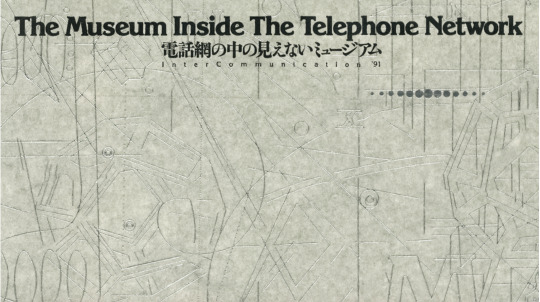




InterCommunication’91 “The Museum Inside The Telephone Network”
Tokyo's 1991 museum show only accessible by telephone, fax and modem, with works by Laurie Anderson, J.G. Ballard, John Cage, Merce Cunningham, Félix Guattari, Derek Jarman, Ryuichi Sakamoto, & many more https://monoskop.org/log/?p=19463
--
The exhibition organised by the Project InterCommunication Center (ICC), founded by the Japanese telecom NTT, was a pioneering project investigating the implications of networked communication for the museum institution. The exhibition was only accessible to home users by means of the telephone, fax, and in a limited sense computer networking. It was meant as a model for a new kind of an “invisible” museum. Later it was followed up by another ICC exhibition The Museum Inside the Network (1995). The ICC opened its exhibition space in 1997.
The works and messages from almost 100 artists, writers, and cultural figures were available through five channels. The works in “Voice & sound channel” such as talks and readings on the theme of communication could be listened to by telephone. The “Interactive channel” offered participants to create musical tunes by pushing buttons on a telephone. Works of art, novels, comics and essays could be received at home through “Fax channel”. The “Live channel” offered artists’ live performances and telephone dialogues between invited intellectuals to be heard by telephone. Additionally, computer graphics works could be accessed by modem and downloaded to one’s personal computer screen for viewing.
Contributors include Laurie Anderson, J.G. Ballard, Christian Boltanski, Pierre Boulez, William S. Burroughs, Merce Cunningham, Daniel Buren, John Cage, Jacques Derrida, Allen Ginsberg, Philip Glass, Félix Guattari, Pontus Hultén, Derek Jarman, Jeff Koons, Daniel Libeskind, Jackson Mac Low, Judith Malina, Renzo Piano, Steve Reich, Ryuichi Sakamoto, Akira Sakata, Paul Virilio, Robert Wilson, Tadanori Yokoo, John Zorn, a.o.
Edited by Urban Design Research Introduction by Akira Asada, Yutaka Hikosaka, and Toshiharu Itou Publisher NTT, Tokyo, 1991 259 pages
#laurie anderson#jg ballard#john cage#merce cunningham#felix guattari#derek jarman#ryuichi sakamoto#interactive art#william s burroughs
34 notes
·
View notes
Text












Anders Zorn
Anders Zorn (1860–1920) was a renowned Swedish painter, sculptor, and printmaker, celebrated for his exceptional skill in portraiture, nudes, and genre scenes. Born in Mora, Sweden, Zorn rose from humble beginnings to become one of the most prominent artists of his time, achieving international fame and recognition.
Early Life and Education
Zorn was born out of wedlock to Grudd Anna Andersdotter, and his biological father, Leonard Zorn, a German brewer who never married his mother. Raised by his mother and grandparents in a small rural community, young Zorn demonstrated a remarkable talent for drawing and carving from an early age. His prodigious abilities earned him a place at the Royal Swedish Academy of Arts in Stockholm, where he studied from 1875 to 1880.
Artistic Style and Influences
Zorn's work is characterized by his masterful use of light and his innovative brushwork. His paintings often depict scenes of rural Swedish life, portraiture, and the female nude. Zorn developed a distinctive technique that emphasized loose, expressive brushstrokes, capturing the essence of his subjects with remarkable vitality and immediacy. He was particularly adept at rendering the effects of water and light, which became a hallmark of his work.
Zorn was influenced by a variety of artistic traditions and movements. His travels throughout Europe exposed him to the works of the Old Masters, as well as contemporaries like John Singer Sargent and Joaquín Sorolla, with whom he shared a mutual admiration. Despite these influences, Zorn’s style remained uniquely his own, merging elements of Impressionism with his deep-rooted connection to Swedish culture and landscape.
Major Works and Achievements
Some of Zorn's most famous works include his portraits of prominent figures, such as King Oscar II of Sweden, US Presidents Grover Cleveland and William Taft, and industrialist Andrew Carnegie. His portraits are renowned for their psychological depth and lifelike quality.
His genre scenes and nudes are equally celebrated. Paintings like "Midsummer Dance" (1897) and "Emma Zorn" (1894) showcase his ability to depict movement and light with extraordinary skill. Zorn's nudes, such as "Omnibus" (1892), reveal his talent for capturing the human form in naturalistic settings, often emphasizing the interplay between flesh and the surrounding environment.
Printmaking and Sculpture
In addition to his paintings, Zorn was a prolific printmaker, producing over 300 etchings during his career. His prints often featured similar themes to his paintings, including portraits, nudes, and genre scenes. His etching technique was highly regarded for its precision and delicacy.
Zorn also ventured into sculpture, creating several notable works that further demonstrated his versatility as an artist. His sculptural works, though fewer in number, were marked by the same attention to detail and dynamic composition found in his paintings and prints.
Legacy and Influence
Anders Zorn’s impact on the art world extends beyond his lifetime. His works are held in major museums and collections worldwide, including the Nationalmuseum in Stockholm, the Musée d'Orsay in Paris, and the Metropolitan Museum of Art in New York. Zorn’s home and studio in Mora, Sweden, now the Zorn Museum, houses a significant collection of his works and offers insight into his life and artistic process.
Zorn's legacy is also evident in the way he bridged the gap between traditional and modern art. His ability to capture the spirit of his subjects with such vibrant realism continues to inspire artists today. Zorn remains a celebrated figure in the history of art, remembered not only for his technical prowess but also for his profound ability to evoke the beauty and complexity of the human experience.
10 notes
·
View notes
Note
If you get this, answer w/ three random facts about yourself and send it to the last seven blogs in your notifs. anon or not, doesn’t matter, let’s get to know the person behind the blog!
oooh fun! here are some things about me:
i'm a graphic designer and have worked both at an ad agency and inhouse for an interior decor company. despite it being the 🌟 time of technology 🌟 my favorite things to create are print - so; catalogues, brochures, menus, in-store/shelf marketing, etc. it's a pretty cool feeling to physically flip through months and months of work, or to see my work in stores and in customers' social media posts after they purchase items
i love to bake and my project/goals this summer is to perfect making bread! i'm close to making the perfect bagel and next i'm going to tackle bread rolls bc my favorite local bakery just filed for bankruptcy and their bread was so delicious, i need to learn how to make it myself for when they are off the shelves
and eerhm okay, last one. i'm a huge art nerd, i love all kinds of museums (art, history, science, you name it) and the last exhibit i went to was anders zorn and oh my god i love his work, he paints water like no one else can. i have been lucky to have seen his art many times the past two or three years and it floors me every time. i alhambras park (1887) and sommarnöje (1886) are my favorite zorn pieces!


7 notes
·
View notes
Text
Ziggy's Beginner Oil Painting Tips (Part 1)
Despite being far from a master oil painter, I'd like to do what I can to try and make this amazing medium easier to access for all artists in the wake of AI, NFTs and the current culture of art being seen as "content" rather than something timeless.
I'm far from a spiritual person in any sense, but there is something completely unique about holding an oil painting you created in your own hands. I've yet to be lucky enough to see any of the old master's paintings in person so all I've seen are my own but despite my inexperience there's a depth to my oil paintings that my digital art can't begin to compare with.
Disclaimer: I take a very relaxed approach to oil painting and have never sold a painting before nor do I have any intention to start selling them any time soon so if you want to create museum quality pieces this is not the guide for you.
This is a guide to help people start experimenting with oil paints and putting paint to paper/canvas.
Contents:
Paints
Gesso
Mediums
Paints
I'm primarily a portrait painter so the palletes I recommend will mostly be useful for painting people.
My favourite pallete:
Titanium white
Yellow ochre
Dusty pink (optional, I just got it for quickly mixing skin tones but burnt sienna and white will do the same; provide a base which you can then cool down/darken/hue shift as you want
Vermillion hue
Burnt sienna
Burnt umber
ultramarine blue
Basically it's the Zorn pallete with a bit of customization, but that means if you want some tips for painting with this pallete you can just search "painting with the zorn pallete" and find a lot of helpful resources.
(Note: You may note there is no lamp black or Ivory black, that is because I prefer to mix burnt umber and ultramarine blue. This dries faster in my experience and also lets me cool it down or warm it up as I want.)
Budget pallete:
Titanium white
Yellow ochre
Vermillion hue
Alizarin crimson
Viridian hue
(Note: in this pallete alizarin crimson and viridian hue can be used to mix a grey/black)
Gesso
Despite my laziness in nearly all aspects of life I do like to gesso my painting surfaces even when they are pre-primed (if you are using a surface that hasn't been primed already such as paper priming is very important).
Usually I buy packs of cheap canvases for around $6 AUD so I feel as though the least I can do is add a few extra layers of gesso to them to help stop the paint from sinking right in and beginning to look dull and matte.
Honestly I don't have a brand to recommend, I have used the liquitex gesso and it's good but despite paying a lot for it I only had enough for a few canvases so for the most part I use the type you can get at craft stores for less than $10, so I say go for whatever is within your budget.
Mediums
I avoid solvents completely in my painting, sacrificing my health any more than I already do by leading the Sedentary Artist Life (tm) isn't worth it in my opinion.
I use Liquin primarily but I also enjoyed using Gamlin's solvent free fluid until I stopped being able to open the cap...
Linseed oil is probably the best medium but you will wait weeks for your painting to dry between layers verses the day, maybe 2 days you will wait using Liquin.
Brushes
There's really no reason to buy super expensive brushes, at least not for me, I paint in a way that's very loose so they don't have the longest life span. I still use brushes that have lost their shape for loose hairs and interesting textures though.
You'll note there's usually "oil painting" brushes in art supply stores, these are good for starting a painting and scrubbing paint onto the canvas when you are trying to work lean over fat (as in layers with more oil on top as they dry slower, this helps the painting to not end up looking cracked).
However, water colour paint brushes serve me well for details as well as acrylic painting brushes.
It's all up to experimentation on you, the artist's part.
As for washing your brushes, as long as you don't leave them lying around with paint on them for so long that it drys completely using a bar of soap will do, or if you can afford it buying some brush cleaner/ restorer is great, solvents like turpentine are not necessary at all.
#art#oil painting#artists resources#painting#tips#resources#painting on a budget#expert oil painters will probably disagree with all of this but this is advice from someone with adhd and not a lot of money haha#just trying to have fun here yo
32 notes
·
View notes
Text

Mrs Bacon painted by Anders Zorn (1860 - 1920)
38 notes
·
View notes
Text
La Morte
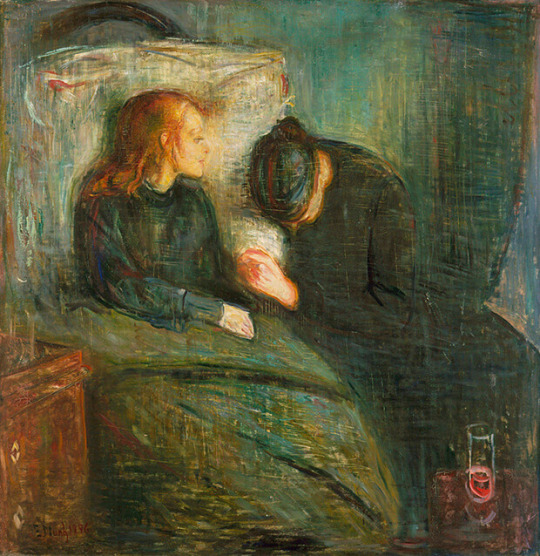
The sick child, 1896 | Edvard Munch (1863-1944, Norway)

Funerale bianco (White funeral), 1901 | Edoardo Berta (1867-1931, Italia)

Autoritratto macabro (macabre self-portrait), 1899 | Carlo Fornara (1871-1968, Italia)

Tombe romane (roman tombs), Concordia (Venice), 1887 | Filippo Franzoni (1857-1911, Switzerland)
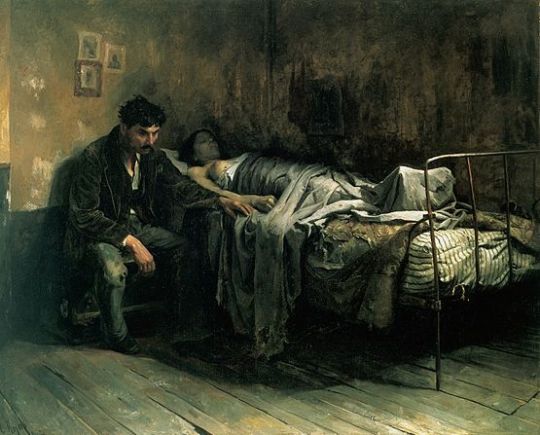
Miseria, 1886 | Cristóbal Rojas (1857-1890, Venezuela)

Böcklin's grave, 1901-02 (Staatliche Kunsthalle, Karlsruhe) | Ferdinand Keller (1876-1958, Germany)
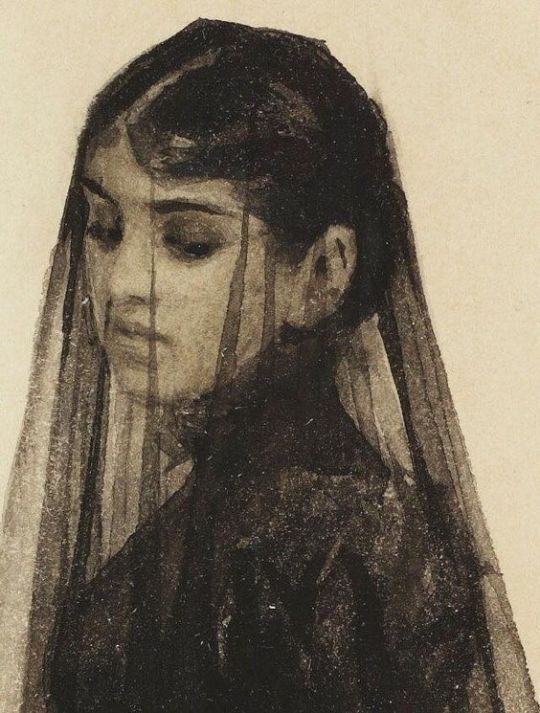
The widow (detail), 1882-83 | Anders Zorn (1860-1920, Sweden)

L’adultera o La femme de Claude, 1877 (Galleria d’Arte Moderna, Torino) | Francesco Mosso (1848-1877, Italia)

The funeral of Shelley, 1889 | Louis Édouard Fournier (1857-1917, France)

La peine de mort | Félicien Rops (1833-1898, Belgium)

Funeral at sea (on the death of the painter David Wilkie), 1842 (Tate Gallery, London) | William Turner (1775-1851, England)

La mort de Marat, 1793 (Musées royaux des Beaux-Arts, Bruxelles) | Jacques-Louis David (1748-1825, France)
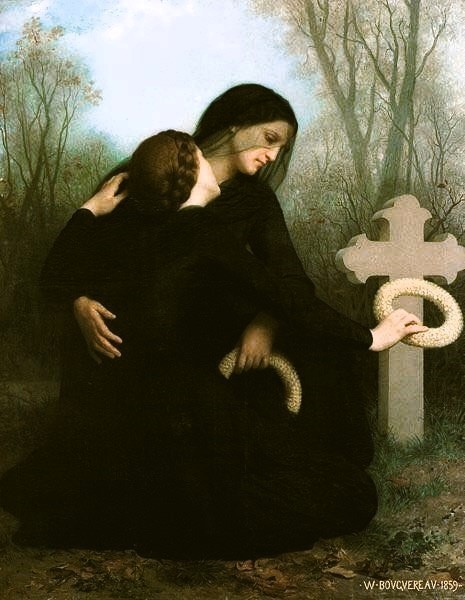
Le jour des morts, 1859 (Musée des Beaux-Arts, Bordeaux) | William Adolphe Bouguereau (1825-1905, France)
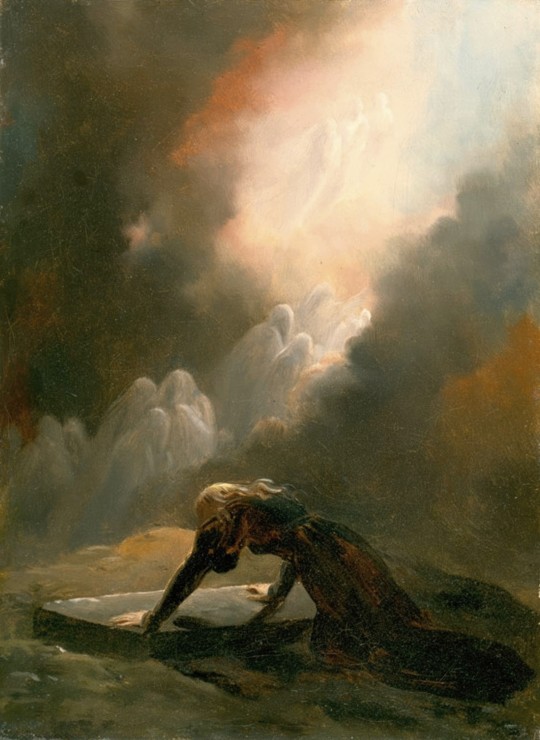
Bradamante at Merlin's tomb, 1820 | Alexandre-Évariste Fragonard (1780-1850, France)

Death on the pale horse, 1865 | Gustave Doré (1832-1883, France)

Il trionfo della morte, 1464 ca. (Palazzo Abatellis, Palermo) | Anonimo

Roman widow | Dante Gabriel Rossetti (1828-1882, England)

Cemetery in the moonlight, 1822 | Carl Gustav Carus (1789-1869, Germany)
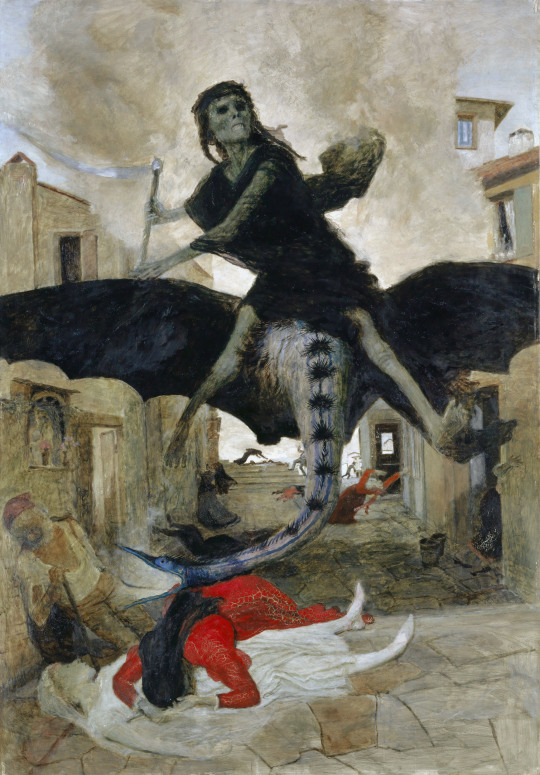
The plague, 1898 | Arnold Böcklin (1827-1901, Switzerland)
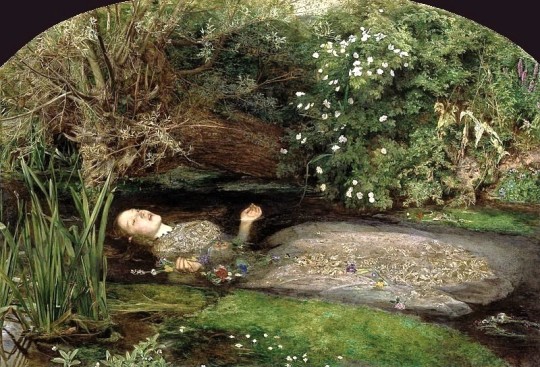
Ophelia, 1851-52 (Tate Britain, London) | John Everett Millais (1829-1996, England)
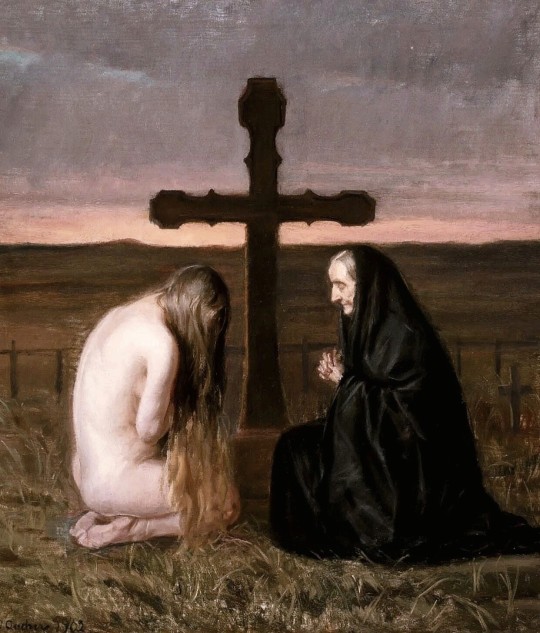
Grief, 1902 | Anna Ancher (1859-1935, Denmark)

The plague of pestilence, portfolio (two of seven etchings), 1920 | Stefan Eggeler (1894-1969, Austria)
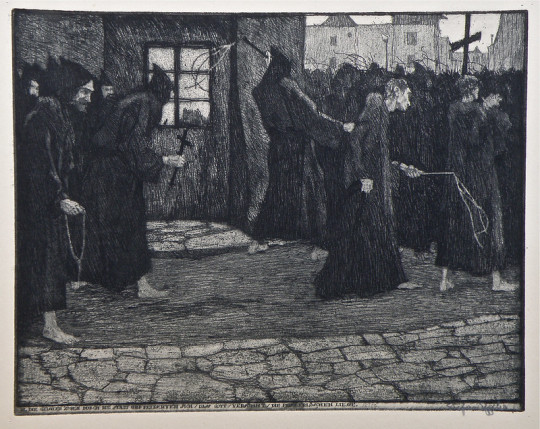
The plague of pestilence, portfolio (three of seven etchings), 1920 | Stefan Eggeler (1894-1969, Austria)

Dr. Nicolaes Tulp's anatomy lesson, 1632 | Rembrandt (1606-1669, Netherlands)

La sepoltura del conte di Orgaz (El Entierro del conde de Orgaz), 1586 (Chiesa di Santo Tomé, Toledo) | El Greco (1541-1614, Greece)

Woman on her deathbed, 1883 (Kröller-Müller Museum, Otterlo) | Vincent van Gogh (1853-1890, Netherlands)

Princess Tarakanova, in the Peter and Paul Fortress at the time of the flood, 1864 | Konstantin Flavitsky (1830-1866, Russia)
5 notes
·
View notes
Text

A speed drawing of "Lucy Turner Joy" by Anders Leonard Zorn that I sketched at the art museum.
I think I'm kind of sort of almost learning that stylization thing? At the very least her eyes are way too big and her neck is way to skinny but she still looks pretty good lmao.
© Calico Print 2023. Do not copy, repost, or redistribute. Released to Patrons two weeks early.
#jack facts#my art#lucy turner joy#anders leonard zorn#traditional art#sketch#sketchbook#speed drawing#marker art#study#art study#portrait
13 notes
·
View notes
Photo


Ingram Braun
⸻
Gerechter Zorn? 500 Jahre Bauernaufstand im Kraichgau
Episode aus dem deutschen Bauernkrieg (Graf Helfenstein am Fuße seiner brennenden Burg, von Bauern verhöhnt) Hermann Eichler (1839 oder 1842 Wien – 1901 Wien) Öl auf Leinwand, um 186 …
#Ausstellung #Bauernkriege #Frühneuzeit #Kraichgau #Museum #Revolution
0 notes
Text
0 notes